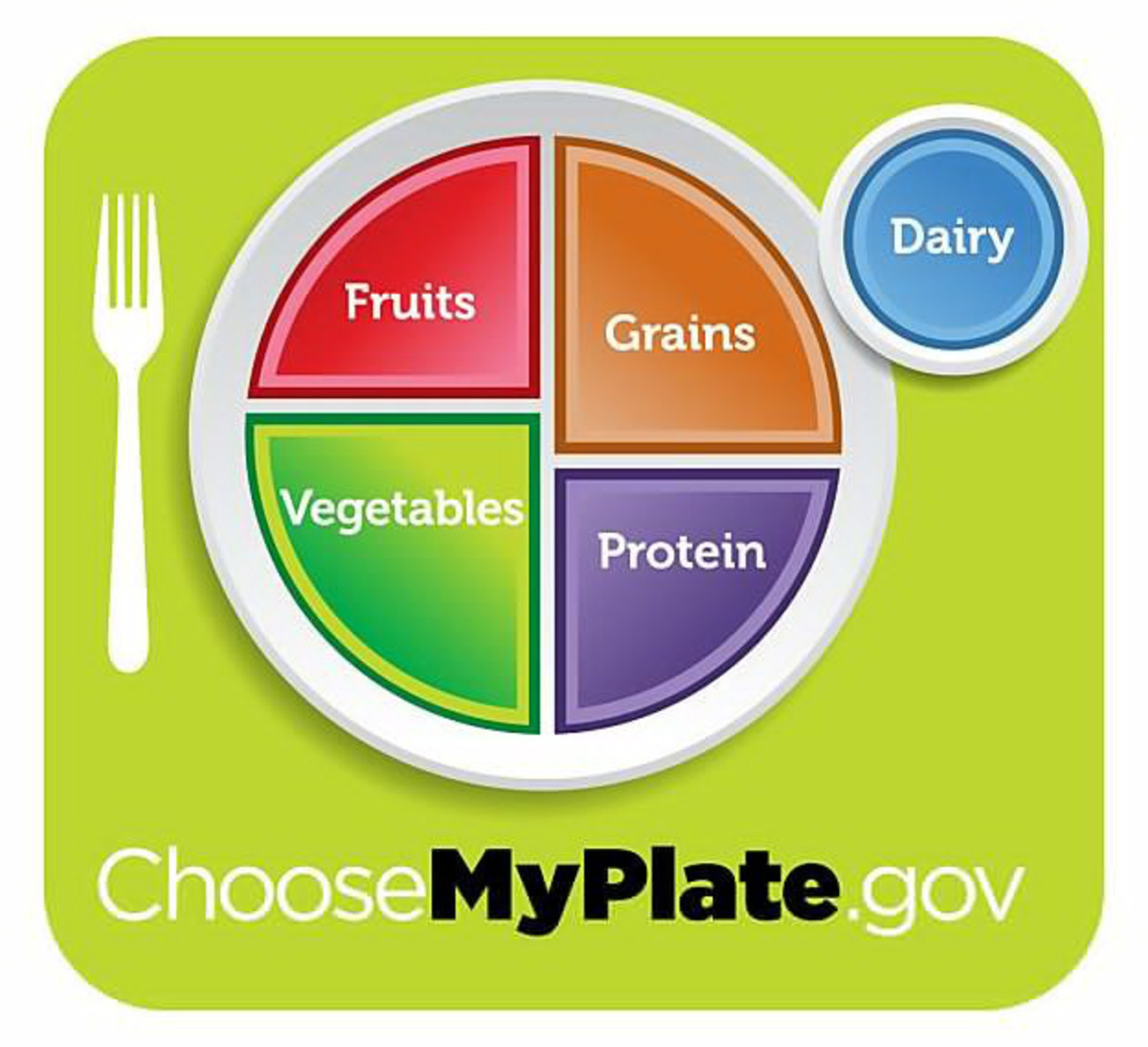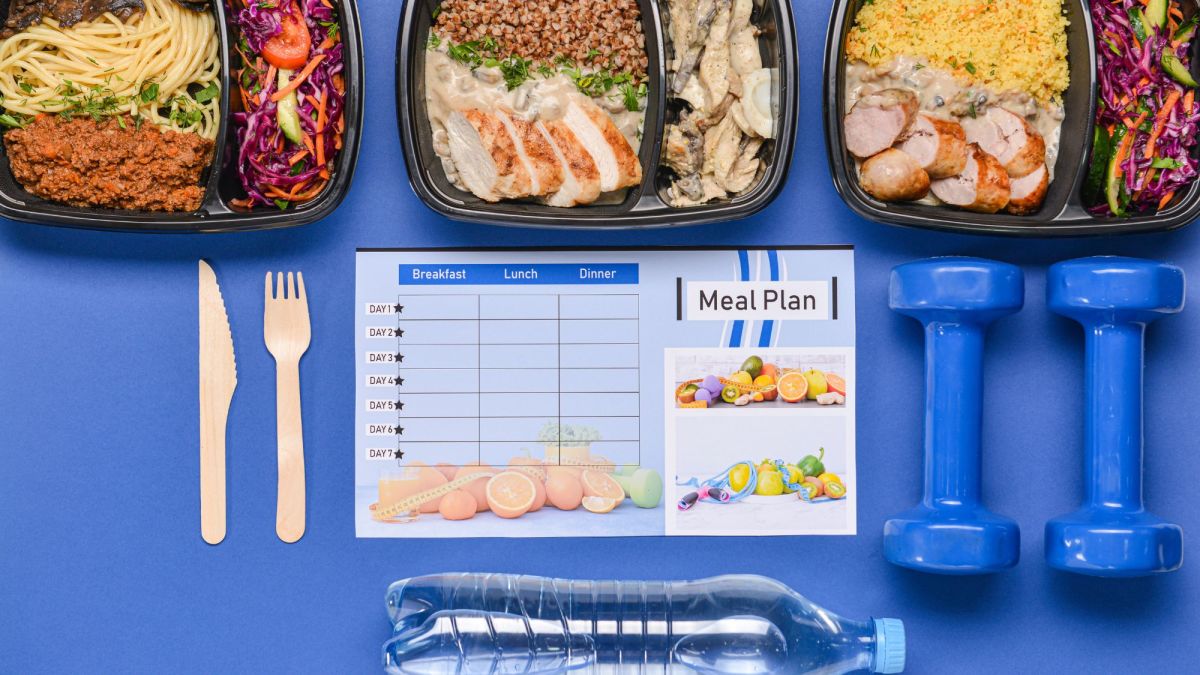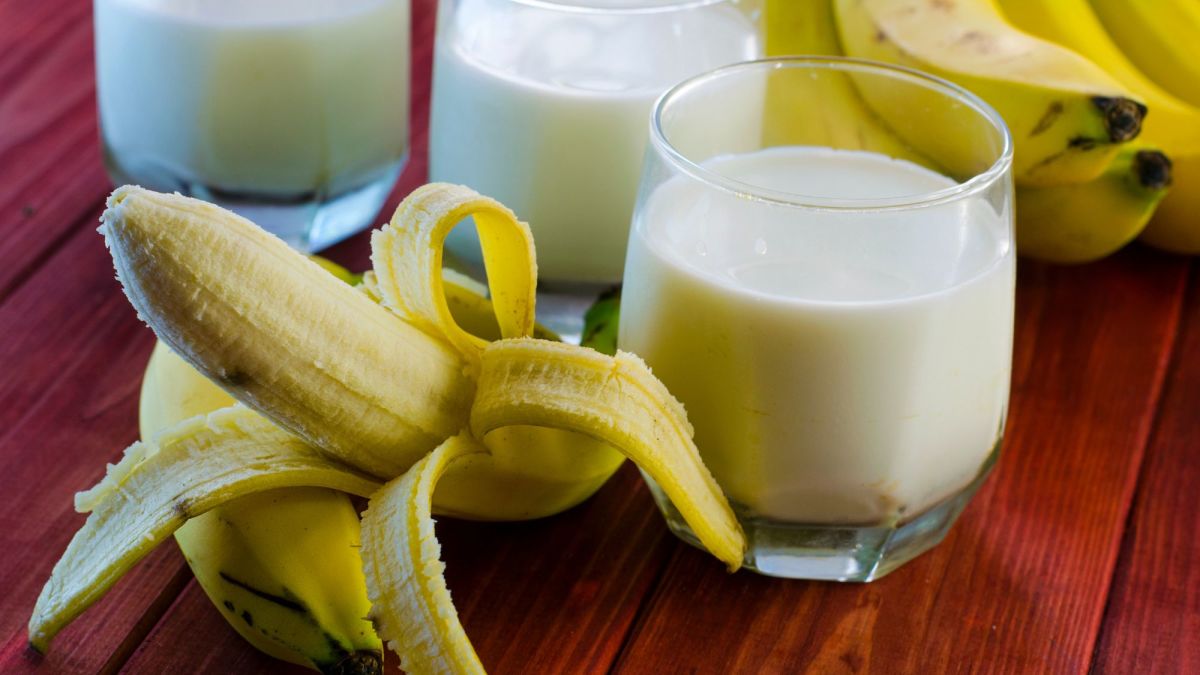- HubPages»
- Health»
- Diet & Weight Loss»
- Healthy Diets
Healthy Eating for Diabetics: Diabetes what to eat and not to eat
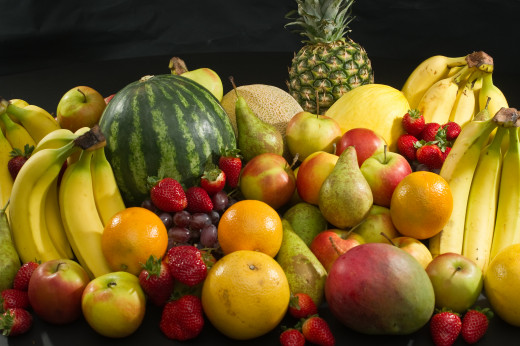
Healthy Eating for Diabetics
For many people who now suffer with diabetes a healthy eating plan is a must. It should include several small meal that they eat throughout the day on a much more condensed and periodic basis in order to maintain their sugar and glucose levels more successfully. As a diabetic will be eating more often it is important that they have meals which include good food choices. So let us take a look at some ways for healthy eating for diabetics.
1. It is vital that they choose foods which are low in fat and that they use non stick sprays when cooking instead of oil.
2. Also they should stay away from fruit juices and any other beverages which are high in fructose. This includes naturally sweetened drinks.
3. They must decrease the amount of salt they have in their diet. So they should steer clear of foods such as pickles, packaged soups or processed meats. So why not try making them some home made soup in the future.
4. Before buying any prepared products they must read the labels. Even the smallest thing that they ingest may be harmless to you but can pose a risk to them.
5. Eat at least 6 or more servings of grains, beans and starchy vegetables each day. It is important that they eat only whole grain and whole wheat bread and flour. They could eat beans as they are a great source of fiber as well as being low in sugar. If they need something to snack on then provide them with pretzels or low fat crackers and if they are the low salt variety that is even better.
6. Eat between 2 to 4 servings of fruit each day. The best type of fruit for diabetics is the citrus varieties such as oranges, grapefruits, lemons etc. It is also better to eat whole fresh fruits rather than canned or frozen as they have less sugar and also contain more fiber. But if they do choose the canned, frozen or juice varieties then get ones which do not contain added sweeteners or syrup.
As you can see, healthy eating for diabetics no longer limits them to items which have been specifically designed for people with diabetes. As long as they choose wisely they should be able to eat many of the products that are readily available in their local supermarket or health food store.
Healthy Eating with Diabetes
What is the Eating Healthy Pyramid?
You've probably heard of it, but never knew exactly what it meant. To put it simply, the eating healthy pyramid is a nutritional guide which has been developed by the Harvard School of Public Health. It suggests how much of each food category a person should eat each day.
The whole idea of this eating healthy pyramid it to provide a better eating guide compared to the more widespread food guide pyramid which was created by the USDA. In the USA around 80% of Americans are aware of the eating healthy pyramid, but only about 8% of them actually follow the recommendations contained within it.
The whole idea of someone using the eating healthy pyramid is to help them choose what they eat, and how much of it they eat from each group to ensure that they are provided with the following:
1. That they get all the nutrients they need for their body to cope with life on a daily basis.
2. That they are consuming the correct amount of energy in order to control their weight.
3. That they are restricting the amount of fat, sugar or alcohol that they consume.
The eating healthy pyramid is divided up into 6 groups and these are as follows:
1. Grains - This includes bread, cereals and pasta and these should make up the largest part of a your daily diet. You should aim to have between 6 to 11 servings of these each day.
2. Plant Sources - These make up the second and third groups in the pyramid and include fruits and vegetables. You should be aiming to eat between 3 to 5 servings of vegetables and 2 to 4 servings of fruit each day.
3. Dairy Products are the fourth group in the pyramid. This includes milk, yogurt and cheese. They are a great source of protein and it is recommended that you should have between 2 to 3 servings of these each day.
4. Meat, Fish, Poultry and Eggs - Also included in this group are dried beans and nuts, for those of you who are vegetarian. The recommended number of servings each day is between 2 and 3. These are important as they provide the body with protein, calcium, iron and zinc.
5. Fats, Oils and Sugars - This is the final group and provides us with taste and calories. You only need to have a small amount of oil or fat (and this needs to be used sparingly) as it contains high energy content. There is no nutritional value to be had from sugar - all it does is contribute extra calories to your diet.
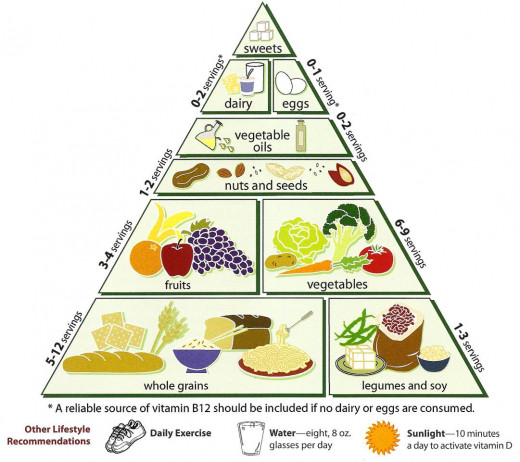
Healthy Eating Guidelines you Should Incorporate Into Your Diet
In May of 1989 the representatives of 9 health organizations and governmental bodies in the USA met under the auspices of the AHA. They reviewed the scientific evidence brought before them and concluded that most Americans could improve their overall health as well as maintain it just by making some fundamental dietary changes. In this article we will look at some healthy eating guidelines that each of the organizations are promoting that were involved in these discussions.
1. Each adult should eat a nutritionally balanced and adequate diet consisting of a variety of different foods.
2. They should reduce their intake of fat (especially saturated fat) and cholesterol.
3. They should increase their intake of complex carbohydrates and dietary fiber.
4. They should reduce their intake of sodium (salt).
5. They should consume alcohol in moderation or not at all. Both children, adolescents and pregnant women should abstain from alcohol completely.
When talking about eating a variety of foods in your diet, we are talking about those that will supply the calories, protein, essential fatty acids, carbohydrates, vitamins, minerals and fiber that are needed to remain healthy. You can eat foods from all food groups such as fruit, vegetables, non and low fat dairy products, whole grain breads, cereals, pasta, plus starchy vegetables, beans,lean meat, and skinless poultry and fish.
The healthy eating guidelines for what percentage of these foods you should consume is as follows:
1. 30% or less of the day’s total calories from fat.
2. 8-10% of the total calories consumed each day should be made up of saturated fatty acids.
3. 10% of the total calories consumed should be made up of polyunsaturated fatty acids.
4. 15% of your daily total of calories consumed should be made up of monounsaturated fatty acids.
5. Less than 300 mg/d of cholesterol foods should be included in a plan.
6. No more than 2.4 g/d of sodium should be included in any plan.
7. 55-60% of the calories that you consume should be made of complex carbohydrates.
The information contained above should help provide you with a more healthy eating guideline, not just for you but members of your family as well. But if you have any queries concerning what you should be eating then speak to your doctor.
Diabetic Meal Delivery – Is It OK for you?
Most people would have heard of home delivered meals. However, this is now old news as the latest concept in the food industry is diabetic meal delivery!
These meals are designed keeping in mind the dietary requirements of type 1 and 2 diabetic patients. These meals are low in carbohydrates and sugar. There are also special weight reducing meals that can be ordered by diabetics who are looking to shed some extra pounds. So all those diabetics who find it hard to make special meals for themselves can rejoice now as they don’t have to do any hard work. The meals are delivered to their doorstep either fresh or frozen.
These meals can be personalised. You can opt for lunches and dinners only or you can give a 7-day meal plan for breakfasts, lunches and dinners. You can also have these meals a l carte!
Diabetic diet food delivery has lots of benefits which is why it is becoming so popular these days.
1. The biggest drawback for many diabetics is that they can no longer enjoy food. Many of them feel that anything that tastes good, also adds to their sugar level. No one wants to live their lives on boiled vegetables and chicken. The good news for diabetics is that this food delivery system prepares food that is not only healthy for these patients but also delicious. So maintaining your sugar levels is no longer a tasteless task! While eating delicious foods, you can also enjoy the knowledge that you are protecting yourselves from various complications like kidney and heart disease that can develop due to uncontrolled diabetes. Hence, it is a win-win situation for you!
2. For diabetics, losing weight is usually a problem because their bodies are making too much insulin. When their blood sugar increases, their production of insulin also jumps up in order to bring down the sugar level. The problem with this cycle is that insulin is a fat storing hormone. So the more insulin the body makes, the harder it becomes to lose weight. The key to breaking this cycle is to control your blood sugar levels. The diabetic food diet delivers food that is prepared keeping this in mind. It helps diabetics to lose weight, which in turn helps them to better manage their sugar level.
3. Diabetic food delivery service also saves you from working in the kitchen. Now you do not need to slave in front of a stove, preparing special meals for yourself. Just tell them what and where you want, and your work is done. When the meal arrives, you sit and enjoy it!
4. Keeping an eye on the diet of diabetic patients is not easy. You cannot be with them 24 hours a day. Making separate meals for them also doubles your work. However, with this diabetic food delivery service, you do not need to worry about whether your patient has eaten a balanced meal or not. Hence, this is made taking care of your diabetic relatives much easier.
Diabetic food delivery service is the best option for people who do not want to make special meals themselves and who don’t want to sacrifice their taste buds for controlled sugar levels. Also, this service is light on the pockets as well. However, don’t just jump into it. Make a proper plan of what meals you want and when you want them, calculate the possible expenditures and if it still seems a profitable decision to you, then pick a phone!
Diabetes friendly recipes poll!
Where do you look for healthy and diabetes friendly recipes?
Recommended!
- How To Revitalize Damaged Hair
Nowadays we all want to make our hair look great by using different methods for taking care of hair, such as highlighting, diving and putting different cheap low-quality sprays and gels on it. All of these can damage our hair and leave some consequen - Essential Oils : Essential Oils Uses and their Benefits
Essential Oils Uses and their Benefits. In this article you will find out the information on the best Essential Oils Uses and their Benefits. As the name suggest, essential oils are very essential. - Health benefits of Cherries and Apricot Kernel Oil
Health benefits of cherries and how cherries will help you loose weight.During summer when cherries are just appearing in the shops it’s an excellent idea to use cherries to loose unwanted weight! - Best Balance Ball Chair for the Office
Are you looking for exercises to do at work? This Balance Ball Chair may be the answer to exercising. Balancing is a lot harder than you think. Balancing strengthens your core and that where all your strength comes from. Have you tried a Balance Ball - Health benefits of Cranberries and Milk
Cranberry grows on peat swamps, in moist woods and near stumps. It is recommenced to use mature berries. They can be harvested in three seasons. - Outdoor Cat House : Information on Outdoor Cat Houses and Outdoor Cat Enclosures
What You Should Really Know About Outdoor Cat House? Keep your feline safe while roaming outside in an outdoor cat house! - Healthy normal cholesterol levels VS bad cholesterol levels
Cholesterol is blood lipids (lipid-fat), some fatty substance. When cholesterol and his plaques start clogging the vessels of the heart or brain, life becomes unbearable. - Stress Management Is a Must
One great stress management technique to start putting to practice is keeping a stress log or journal. Jot down the everyday things that cause you to feel stress or pressure.






